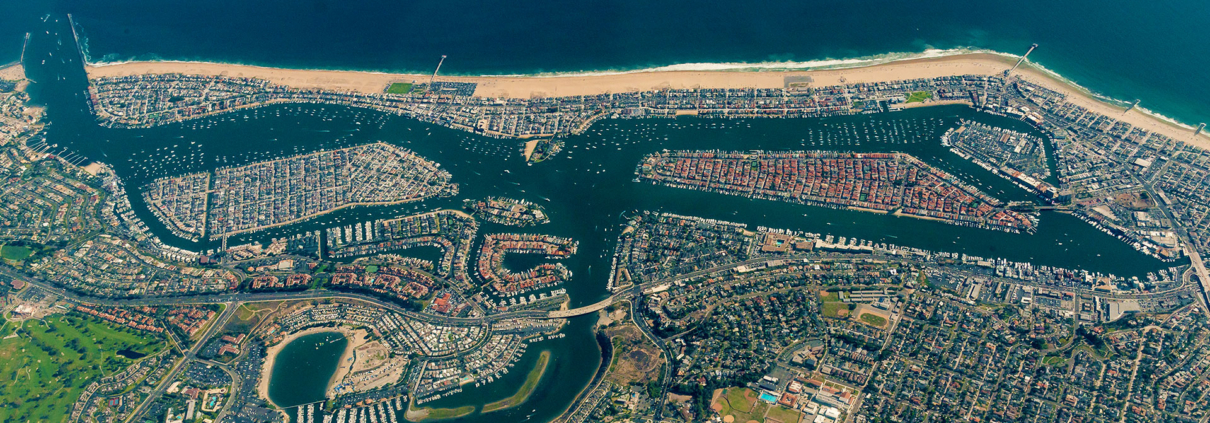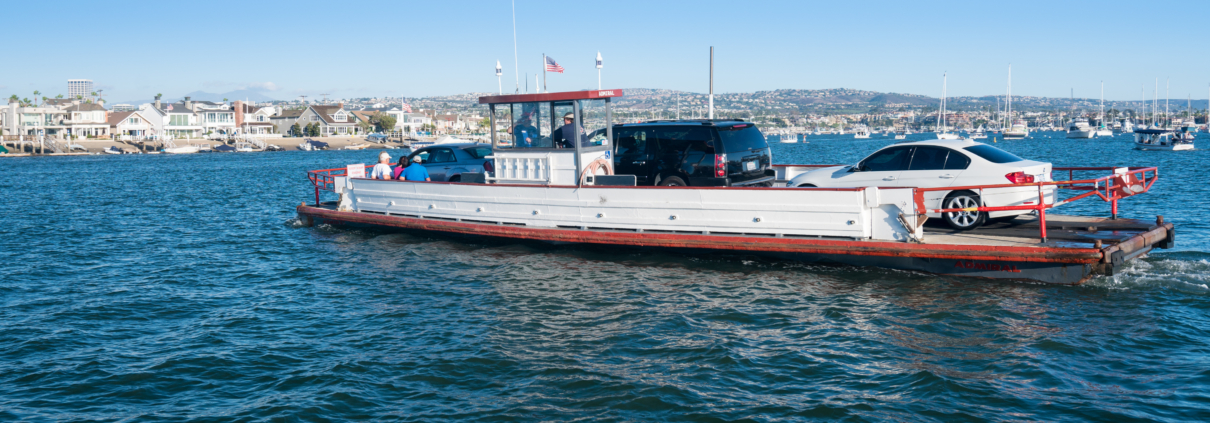The City of Newport Beach
The Facts Behind the City’s Dredging Project and In-Harbor Sediment Plan
The California Coastal Commission is preparing to consider permitting plans for an important Newport Harbor dredging project. The City of Newport Beach would like to remind residents about the critical need for this project and clarify key topics, including the rigorous environmental analysis that supports the proposal.
Dredging Newport Harbor is critical to maintain safe navigation and a well-functioning harbor. Over the past several decades, sediment has washed down into Newport Bay and accumulated at the bottom of Newport Harbor, which reduces water depths, impedes navigation and diminishes natural tidal flushing. Periodic dredging of Newport Harbor is essential to maintain safe, navigable waterways for recreational, commercial and public safety vessels; increase necessary ocean water flushing to support good water quality and habit and support the economic vitality of the harbor. In total, the project will dredge and remove about 1.2 million cubic yards of accumulated sediment, therefore returning the waterways to their original depths of -10 to -20 feet. Without dredging, sediment will continue to build up, making navigation more difficult and dangerous and decrease tidal flushing, leading to more stagnant water conditions.
This project will improve the harbor environment. Dredging will improve the harbor aquatic environment by increasing tidal flushing. The harbor’s smaller back channels will especially benefit from increased circulation. The project will also improve water quality. Sediment that contains low levels of pollutants (identified in less than 9% of the dredge material) would be placed underground within the harbor where it would no longer be freely circulating near the harbor floor.
The sediment identified for in-harbor placement is not considered hazardous or toxic under the stringent definitions of the EPA. The sediment has been tested and is not toxic or hazardous as defined by state or federal regulations. These terms have very specific regulatory definitions that do not apply to the material being dredged. Rather, the material is considered “unsuitable” for open ocean disposal at EPA’s dredge material disposal sites offshore. The primary contaminant of concern in the harbor are trace amounts of mercury (found in fluids such as motor fuels) that is contained in the harbor bottom sediments. The generally accepted threshold allowed in Southern California for open ocean disposal is 1.0 parts per million (ppm) of mercury within the sediment. The in-harbor mercury levels to be placed within the CAD range from about 1.5 ppm to 5 ppm. To be clear, this same sediment material is currently allowed to remain on the harbor bottom as-is should the in-harbor disposal project not be constructed.
Testing showed that the unsuitable dredge material was not harmful to aquatic organisms. The assessment of proposed dredge material included biological testing using multiple species of aquatic organisms that were exposed to sediment for several weeks. This was done under strict laboratory testing protocols developed by the EPA and regulatory agencies. No toxicity was observed during testing. All mercury concentrations in tissues were below those that have been shown to cause toxicity to marine organisms. This means that the tested species were healthy and not affected or harmed by weeks of direct contact with the unsuitable material. In addition, all tissue concentrations were below U.S. Food and Drug Administration action levels for mercury in fish and shellfish for human food, indicating this would not pose a human health risk.
The CAD would provide a confined location for harbor bottom sediment that is now exposed to the environment. The sediment unsuitable for open-ocean disposal is currently situated at the bottom of the harbor where it is subject to being continually stirred up through everyday boating activity. The unsuitable sediment will be placed in a large hole, then covered with clean sediment to create a contained system that will prevent this material from being stirred up and resuspended in the water, where it makes contact with boats, swimmers and wildlife.
The dredging plan is subject to rigorous environmental analysis and approval by multiple outside agencies. The city’s Environmental Impact Report (EIR) which includes a thorough analysis of the proposal, has been available to the public since 2020. Several public hearings were held as the EIR came before the Harbor Commission and City Council for approval in 2021. Throughout the approval process, city staff has met with numerous groups, harbor stakeholders and individual residents to explain the proposal and invite comment. The dredge plan is subject to approval by the EPA, California Coastal Commission, U.S. Army Corps of Engineers and the Regional Water Quality Control Board.
Multiple alternative methods other than in-harbor disposal were considered. As required by the EIR, the city considered many potential alternatives to the recommended proposal. Shipping the material by barge to the ports of Long Beach or Los Angeles was not possible as the ports do not have plans to expand in the foreseeable future. Removing the material by land is impractical, prohibitively expensive and would result in increased environmental impacts. It would require the construction of a shore-side processing area and transporting the material to a landfill by an estimated 8,800 truck trips. This would cause considerable impacts to the environment, roadways and surrounding neighborhoods. The city also considered alternatives suggested by residents, such as placing unsuitable material at the Lower Castaways public park. An independent consultant retained by the city to review this approach found that it could cost as much as $89 million and would impact public access, animal habitats, coastal bluffs, visual quality and public views. Another suggested approach was to treat the material and then dispose of that treated material in the open ocean. Unfortunately, the EPA does not allow any treated material to be placed in the open ocean.
Without the CAD, Newport Beach could not dredge main channels in the harbor. If the unsuitable material is left in place and not dredged, high spots in the main channels would continue to build up over time. Navigation will continue to be affected along the entirety of W. Coast Highway as well as the Peninsula Channel from 12th Street to 19th Street. Larger vessels and vessels with deep keels would be restricted to favorable high tides and would continue to stir up unsuitable sediment, creating plumes in the harbor. These navigation concerns would affect all vessels, including visiting vessels and those requiring shipyard maintenance that must pass through these channels.
IMPORTANT NOTICE
The California Coastal Commission is meeting on the final approval of this project October 14, 2022.
Email correspondence will be distributed to the Commission before the hearing on this item if it is received by 5 pm on Friday, October 7, 2022 before the hearing. If it is received after that time, then it will not be distributed to the Commission.
Please send your support in email to:
Subject Line: I support the CAD & Dredging Project in Newport Beach
Application No. 5-21-0640
The Coastal Commission website is www.coastal.ca.gov.
Application No. 5-21-0640.
Thank you for your support!
This piece was provided by the City of Newport Beach.
Download or Print the PDF





Leave a Reply
Want to join the discussion?Feel free to contribute!